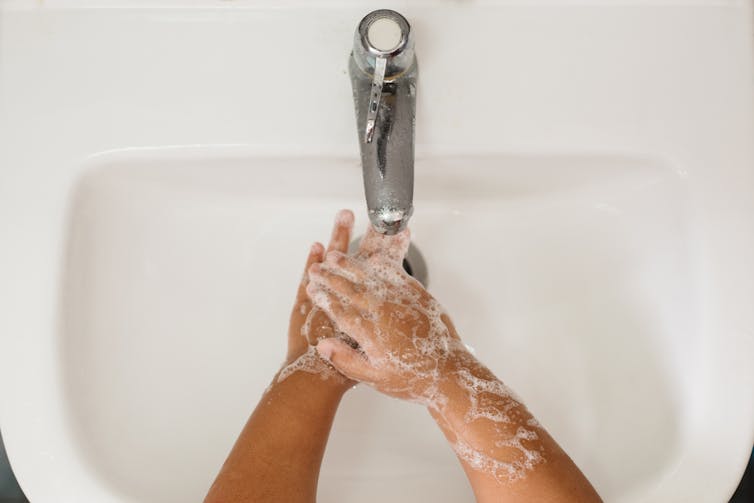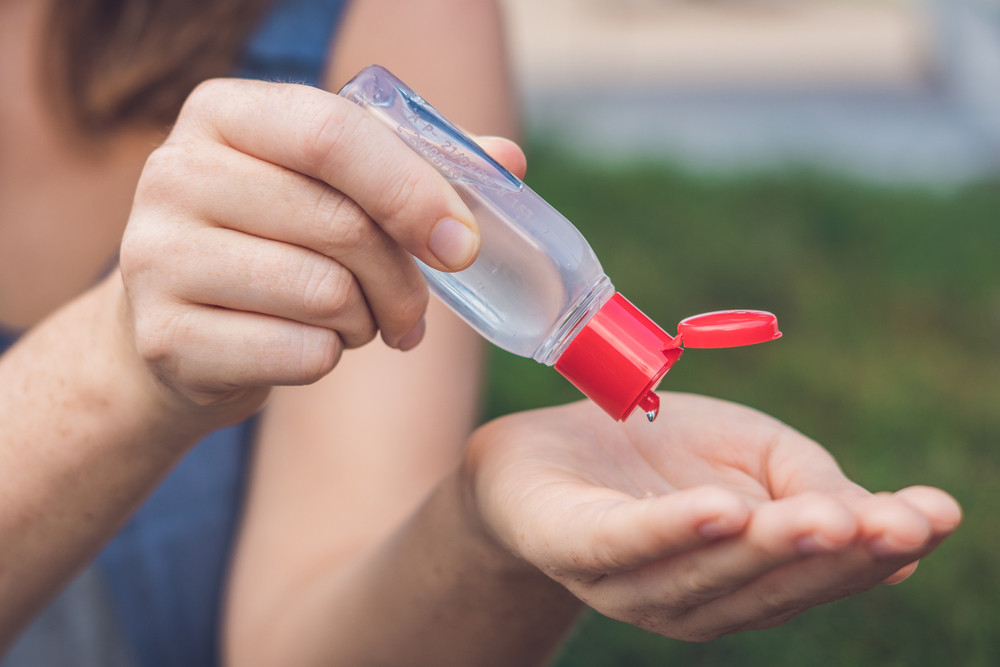Popular Reads
Top Results
Can't find what you're looking for?
View all search resultsPopular Reads
Top Results
Can't find what you're looking for?
View all search resultsCOVID-19: Not all hand sanitizers work against it – here’s what you should use
With shortages leading some people to try and make their own hand sanitizers, it’s also important to know these might not be as effective as commercially available products.
Change text size
Gift Premium Articles
to Anyone
S
ince the outbreak of COVID-19, sales of hand sanitizers have soared. It’s become such a sought-after product that pharmacies and supermarkets have started limiting the number that people can buy at one time. New York state has even announced it will start producing its own hand sanitizer to meet demand. Though hand sanitizers can help reduce our risk of catching certain infections, not all hand sanitizers are equally effective against coronavirus.
As with other viral respiratory infections – like the common cold and flu – the novel coronavirus (called SARS-CoV-2) is mainly spread when virus-laden droplets from a person’s mouth or nose are transferred to other people. However, a recent study has suggested that it can also spread through faeces.
Aside from inhaling droplets, you can also get respiratory viruses including SARS-CoV-2 by touching anything contaminated with the virus and then touching your face, in particular your mouth or nose. We touch our faces a lot without even realising it. A study from New South Wales found that people touch their faces about 23 times an hour
Washing with warm water and soap remains the gold standard for hand hygiene and preventing the spread of infectious diseases. Washing with warm water (not cold water) and soap removes oils from our hands that can harbour microbes.
But hand sanitizers can also protect against disease-causing microbes, especially in situations when soap and water aren’t available. They’re also proven to be effective in reducing the number and type of microbes.
There are two main types of hand sanitizers: alcohol-based and alcohol-free. Alcohol-based hand sanitizers contain varying amounts and types of alcohol, often between 60 percent and 95 percent and usually isopropyl alcohol, ethanol (ethyl alcohol) or n-propanol. Alcohol is known to be able to kill most germs.
Alcohol-free hand sanitizers contain something called quarternary ammonium compounds (usually benzalkonium chloride) instead of alcohol. These can reduce microbes but are less effective than alcohol.
Not only are alcohol-based hand sanitizers found to be effective at killing many types of bacteria, including MRSA and E coli, they’re also effective against many viruses, including the influenza A virus, rhinovirus, hepatitis A virus, HIV, and Middle East respiratory syndrome coronavirus (MERS-CoV).
Destroying viruses
Alcohol attacks and destroys the envelope protein that surrounds some viruses, including coronaviruses. This protein is vital for a virus’s survival and multiplication. But a hand sanitizer needs to be at least 60% alcohol in order to kill most viruses.
Hand sanitizers with less than 60 percent alcohol were also found to be less effective at killing bacteria and fungi and may only reduce the growth of germs rather than killing them outright.
And even hand sanitizers containing 60 percent alcohol can’t remove all types of germs. Studies have found that hand washing is more effective than hand sanitisers at removing norovirus, Cryptosporidium (a parasite that can cause diarrhea), and Clostridium difficile (bacteria which cause bowel problems and diarrhea).
With shortages leading some people to try and make their own hand sanitizers, it’s also important to know these might not be as effective as commercially available products.

If hands are visibly dirty, hand washing with soap and water is more effective than using alcohol-based hand sanitizers. Research has found that the detergent effect of soap and the friction of washing work together to reduce the number of microbes on our hands, as well as the dirt and organic materials.
Sneezing or coughing into your hands also requires more than just a pump of hand sanitizer to disinfect them. This is because if your hands are contaminated with mucous, the hand sanitizer might not work as well because mucous acts to protect microbes.
As a result, the best and most consistent way of preventing the spread of the coronavirus – and reducing your risk of contracting it – remains washing your hands with soap and water as a first choice, and avoiding touching your face as much as possible.
But alcohol-based hand sanitizers (with at least 60 percent alcohol) are a practical alternative when soap and water aren’t available. If you are using hand sanitizer then, just like when washing with soap and water, you need to make sure you cover your hands (including between your knuckles, wrists, palms, back of your hand and your fingernails) fully, rubbing it in for at least 20 seconds so it’s truly effective.
---
Manal Mohammed, Lecturer, Medical Microbiology, University of Westminster
This article is republished from The Conversation under a Creative Commons license. Read the original article.










